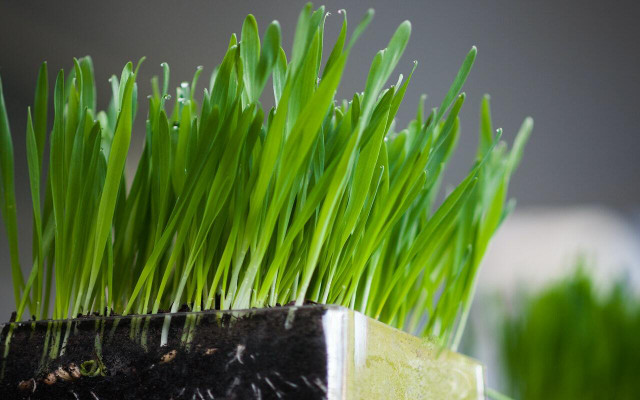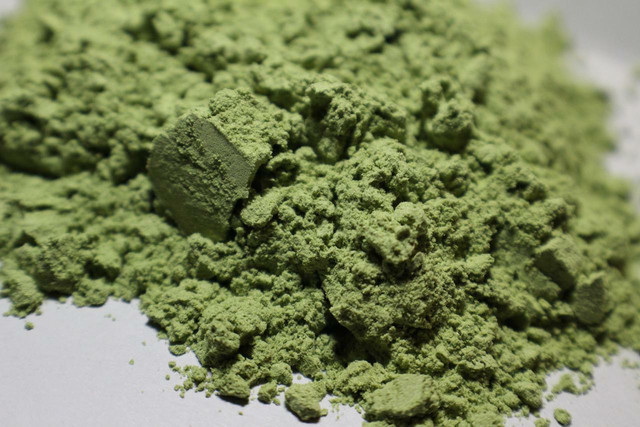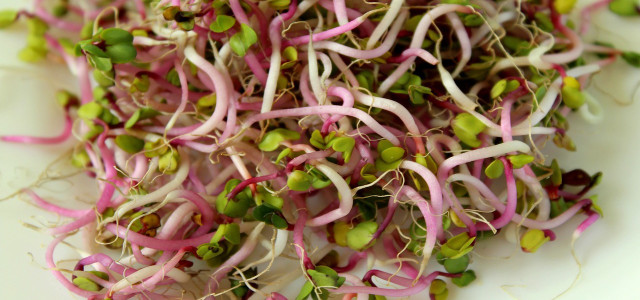Wheatgrass is a vitamin-packed superfood that’s growing in popularity. So, exactly what is wheatgrass good for? Read our guide to its health benefits, side effects and more.
Wheatgrass, increasingly popular in health food stores, is simply the sprouts of common wheat — the same grown worldwide for grain, flour and bread. Rather than maturing and producing grain, wheatgrass is harvested young while it’s still full of nutritional value.
What Is Wheatgrass Good For?

Wheatgrass is linked to a number of health benefits, including:
- Antioxidants, minerals, and vitamins C and E
- Anti-cancer properties
- Lower high cholesterol
- Better blood sugar levels
- Improved hemoglobin levels (due to its high chlorophyll content)
Whole wheatgrass is rich in nutrition. It has loads of vitamins, thylakoids and fiber, like other leafy greens. Fiber helps weight loss and can increase the feeling of fullness. Juicing causes wheatgrass to lose much of its fiber content, so it’s recommended to blend and eat it whole if you are looking to feel fuller.
Wheatgrass is also gluten free, as gluten is only found in wheat grain itself.
Potential Wheatgrass Side Effects



Although wheatgrass has multiple health benefits, there are also a few side effects and drawbacks to be aware of:
- Although it is suitable for most people, generally, healthy individuals won’t benefit as much as those with medical conditions or lower nutrition.
- Side effects are rare but can include nausea, headaches, or constipation.
- Although it contains no gluten, it can still cause reactions in those with wheat allergies.
- It can quickly develop mold. For this reason, wheatgrass may not be best for pregnant women.
In addition to these health side effects, a few caveats limit wheatgrass’s benefits. The most obvious is that wheatgrass, being a literal grass, can taste like lawn clippings. This bitter, pungent flavor may be unpleasant to some people, particularly if it is concentrated in a shot.
The type of wheatgrass (powder or juice) also affects health benefits and vitamin content. While the powder has a longer shelf life and more fiber, drying reduces its effectiveness. So, some choose to grow wheatgrass at home for a fresh product.
Usage



With many potential benefits and few risks, wheatgrass makes a great addition to any meal — provided you don’t mind the taste. Since it doesn’t have extensive research yet, there is no universally accepted dosage. However, most sources agree that 2-3 grams (1 teaspoon) or 2 ounces (1 shot) once or twice daily is adequate.
Although taking too much likely won’t cause any side effects, it won’t benefit you either, as the body can’t absorb the excess nutrients. Cooking wheatgrass can reduce its health benefits, which is why nearly all recipes are cold and fresh. Here are some meal ideas:
- Mix the powder into a glass of water or drink fresh juice as a shot.
- Add it to smoothies, green juice, or kombucha cocktails.
- Its taste is easily disguised in soups, sauces, salad dressings, dips, guacamole, homemade hummus, or pesto.
- Use it in parfaits, oatmeal, açai bowls, cold desserts, or vegan ice cream recipes.
Read more:
- How to Grow Microgreens: A Step-By-Step Guide
- How to Make Celery Juice: Recipe and Benefits
- Raw Food Diet: Risks, Benefits & Easy Recipes
Important Information regarding Health-related Topics.
** Links to retailers marked with ** or underlined orange are partially partner links: If you buy here, you actively support Utopia.org, because we will receive a small part of the sales proceeds. More info.Do you like this post?







